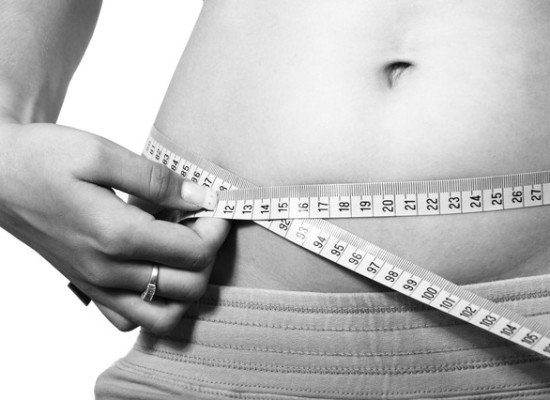

P90X and Calorie Deficit
Let’s talk about P90X and calorie deficit.
One of the most frequent questions I get from people is a concern that they are taking in too many calories to lose weight while doing P90X. They just cannot see how they could possibly lose weight while taking in the number of calories recommended by the plan. This is particularly true with people who have been on some form of low calorie diet, like Weight Watchers. Running a calorie deficit is one way to lose weight, but cut too many calories and you’ll sabotage your results.
It’s really important to understand what we mean by a calorie deficit.
A calorie deficit is the difference between what you burn and what you eat. If you eat 2,000 calories and burn 2,500 in a day, your calorie deficit is 500 and your “net” calorie number is 1,500. This is important because the size of your calorie deficit will help determine how much weight you lose each week. Creating a calorie deficit forces your body to use stored energy, which will cause the weight loss.
To lose one pound in a week, you need to create a calorie deficit of 3,500 calories during the week. Since a week has seven days, you divide 3,500 calories by seven and get 500. Too many people take this advice to the extreme and try to run a bigger deficit to lose more weight. We’ll examine why this is a bad idea below, particularly while doing P90X.
The primary reason that taking in far too few calories is a bad idea is that it isn’t sustainable. For most people, this means depriving themselves of food. At some point, that will power is going to cave and the calories are going to go back up. When they do, the body is ill equipped to deal with the situation since it has been under fueled for some period of time. The result is a less efficient metabolism that causes your body to store more fat. What works, and what is sustainable, is a sensible calorie deficit comprised of a healthy diet combined with regular exercise.
Here are a few key things to understand with the P90X Nutrition Plan:
- Get the right number. Keep in mind that the P90X Nutrition Plan adds 600 calories to your daily total. It does so to avoid running a deficit, because the plan isn’t designed specifically for weight loss. The 600 figure is a rough approximation of how many calories the average person burns doing a P90X workout. The truth is that women usually burn less than 600 calories doing P90X, so this is somewhat imprecise. If you have a heart rate monitor that gives you calorie expenditure, this is an easy number to dial in. You can also just take the 600 out of the equation, and then you’ll be in a deficit situation.
- Focus on net calories. Don’t focus on the total amount of calories you’re taking in. Look at how many you’ve burned as well. Let’s say you’ve taken in 2,000 calories in a given day and you burned 500 doing Plyometrics X. Your net is 1,500 for that day. That’s what your body has left to use, so don’t focus on 2,000, focus on 1,500 since that’s what your body has left to run your essential bodily functions and generally power your body through the day.
- Understand RMR + BMR. Step 1 in calculating your calories with the P90X Nutrition Plan is calculating your Resting Metabolic Rate (RMR). RMR and BMR (Basal Metabolic Rate) are designed to provide the amount of calories your body would use if you did nothing, but rest, all day (no exercise). The P90X equation isn’t that precise, because it doesn’t take into account height or age and only relies on weight. You can find a better RMR calculator at Shapeup.org. Calculate your RMR and use that number in the spreadsheet you’ll find in our breakdown of the P90X Nutrition Guide. BMR is just another way to calculate this, but it is a good number to understand if you are struggling with this issue. Here is a good BMR calculator: BMI-Calculator. BMR is the minimum calorific requirement needed to sustain life in a resting individual. It can be looked at as being the amount of energy (measured in calories) expended by the body to remain in bed asleep all day! (Source: Shapefit.com)
All too often, people contact me proposing a calorie intake that is at or below their RMR or BMR. Again, this is usually in response to previous diet plans that do not require exercise or take into account the calories net of exercise.
Let’s assume your BMR is 1,500. If you take in 1,500 calories, and burn 500 doing P90X, your net after P90X is only 1,000. Then, take into account your regular daily activity. If you have an active job or chase kids around all day, you’re burning even more calories, driving your net even lower. When you understand what RMR and BMR are, you see why it is important not to go below that number. It is extremely unhealthy and, over time, can cause your body to actually store fat as it attempts to protect itself against what it views as starvation.
So what? Won’t I just lose more weight if I cut my calories below my BMR? Maybe or maybe not, but it won’t be healthy. Check this out—Calorie deficit thresholds: How low is too low?
So, now that you have the info, how do you make it work?
If you’re doing P90X and want to lose weight, the easiest thing to do is just take the 600 calories out of the equation. For most people, this works. If you want to get really precise about it, then you can use the calculators above to calculate your RMR and/or BMR and use this number in Step 1. If you want to lose weight, take out the 600 calories that are added in. That should give you a pretty good idea of what your gross calories will be.
You then need to understand your net calories, and you can do that by calculating the number of calories you burn working out. Again, if your gross is 2,000 calories, and you burn 500, then your net is around 1,500 (not including your daily activity, which you should take into account—a construction worker needs more calories than a computer programmer).
Another thought is to calculate your calories using the Insanity Calorie Calculator, which uses the Harris-Benedict Equation to calculate BMR and has built in adjustments for activity levels. In addition, you can always contact me. I’m always happy to help people calculate their calories and arrive at a number that works for them. (Click on the button below to learn more about our FREE coaching program.)
One final note…this article only talks about calories. What you eat is just as important as how much you eat. You can lose weight by eating exclusively McDonald’s if you get the calorie deficit right. That doesn’t mean it is healthy or sustainable. I strongly encourage you to explore around our website and learn more about healthy eating. Eating well will accelerate your weight loss and promote a healthy way of life, which is what works over the long haul.




